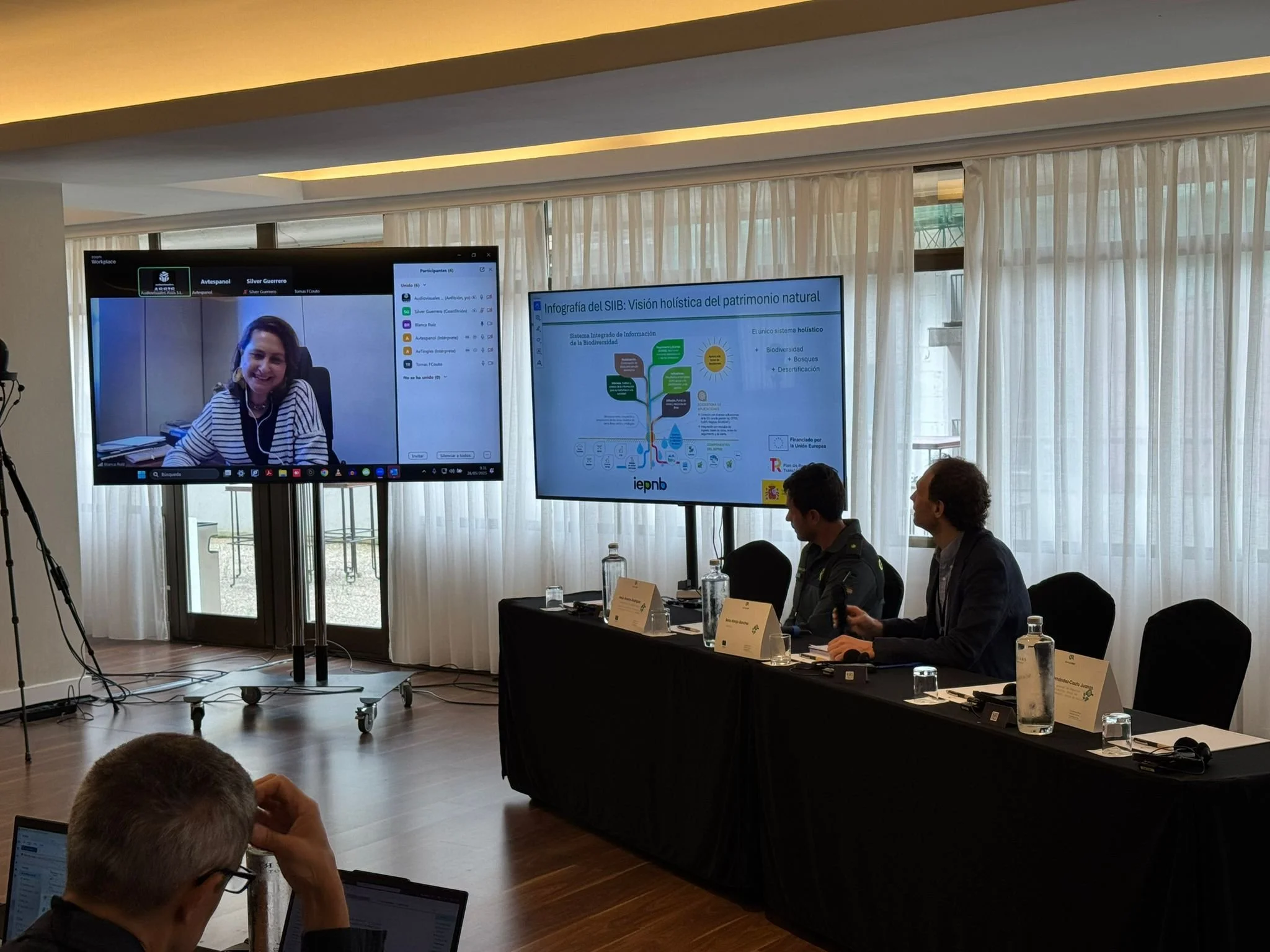Workshop in Lugo (Spain) showcases how technology and collaboration are helping preserve biodiversity in Ancares-Courel and beyond
Lugo, 30 May 2025 — Over 50 biodiversity experts, scientists, law enforcement officers, and conservation organisations from across Europe gathered in Lugo for a high-level technical workshop organised under the EU-funded Nature FIRST project. Held from 28 to 29 May, the event focused on improving how nature is monitored, how environmental crimes are addressed, and how Nature FIRST tools can be applied directly in the Ancares-Courel Natura 2000 site and beyond.
Galicia at the centre of innovation
Hosted by the Xunta de Galicia in cooperation with Nature FIRST and local partners, the workshop offered a space to test practical solutions and strengthen collaboration among institutions, researchers, and enforcement agencies.
Participants included representatives from the Xunta de Galicia, SEPRONA (the Civil Guard’s Nature Protection Service), universities, research institutions, and Nature FIRST partners. They explored ways to assess biodiversity, prevent ecological damage, and turn scientific data into defensible evidence for environmental protection.
“Galicia is a great partner in the Nature FIRST project. Thank you very much to Xunta de Galicia, SEPRONA, the Ministry for the Ecological Transition, and everyone who joined the event. It’s important to take the time to listen, to connect, and to give nature a voice — to give nature first place.”
— Tomás Fernández-Couto Juanas, Xunta de Galicia
From digital twins to forensic tools
The workshop featured a series of technology demonstrations, including the Human-Bear Conflict Radar and field-ready approaches to species monitoring and data collection. Experts shared reflections on how new tools are reshaping conservation strategies on the ground.
“Applying digital twins like the Human-Bear Conflict Radar in this region showed just how complex it is to integrate real-time field data into processing systems… This project has focused so much on collaboration between field staff, modellers, and stakeholders. It’s still a new approach, but it’s helping us understand both the possibilities and limitations of digital twins in conservation.”
— Anna Davison, Wageningen University“What’s striking is that the challenges in investigating wildlife crime are so similar across countries — from the UK to South Africa to the US. There’s no single solution, but that’s exactly why forensic tools and shared approaches matter. They help us work together, improve investigations, and make the most of limited resources in complex and often under-sentenced cases.
Workshops like this one are incredibly valuable. I’ve learned so much from the use of tools like camera traps and from being here in the region. This kind of collaborative, hands-on exchange is exactly what we need to move forward.”
— Claire Gwinnett, Staffordshire University
Making science legally robust
Translating science into legal evidence remains a key concern for enforcement bodies and field teams. Several speakers highlighted how methodology, training, and traceability play a central role.
“Scientific data is essential, but it’s the methodology behind it that really matters… Science gives us structure, but in environmental crime, one size never fits all.”
— Gemma Prieto Bonete, Guardia Civil (UCOMA)“All of our investigative work is grounded in science… That’s where new training and technologies help us adapt and improve — not just to solve crimes, but to understand the full impact on nature and identify those responsible.”
— Elena Moya, SEPRONA A Coruña
From Galicia to Europe: why local pilots matter
Ancares-Courel was selected as a test site due to its environmental richness and active conservation efforts. The workshop allowed for real-world validation of Nature FIRST tools in this context.
“Participants highlighted the great value of the technological solutions presented, including integrated environmental data systems with data semantics, tools for administrative management, habitat mapping models based on artificial intelligence and local knowledge, and species recognition devices to facilitate fieldwork.
Ancares-Courel proved to be an ideal pilot area due to its environmental richness and the convergence of initiatives for monitoring, environmental improvement, and the prevention of conflicts between humans and wildlife. The practical application of these solutions was directly observed during the field visit to the natural area, emphasizing the collaboration that has existed in this project with local agents in the field.”
— Boris Hinojo, 3edata
Looking ahead
Insights from the Lugo workshop will feed into the Nature FIRST Final Conference in June and inform future policy recommendations, replication strategies, and continued development of the project’s tools and approaches across Europe.




